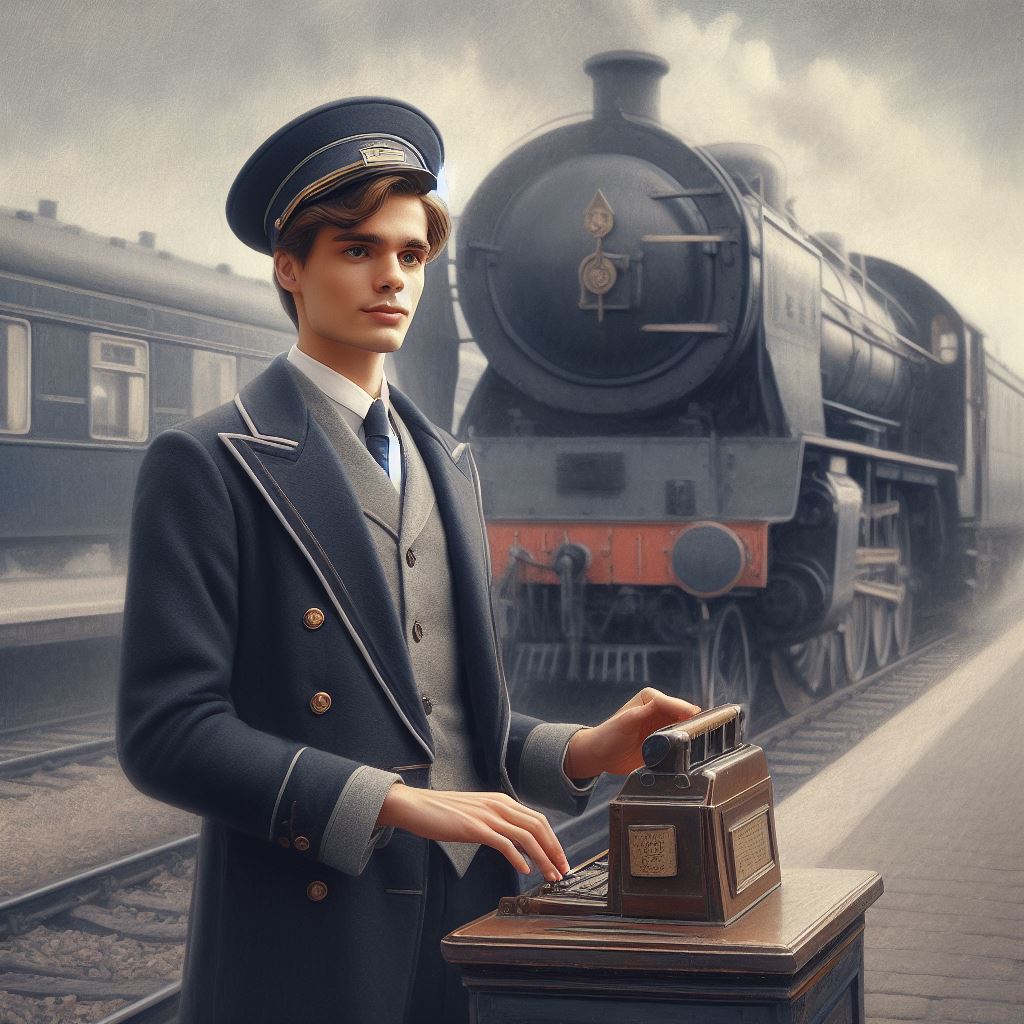Introduction
Air Traffic Control: Trends and Innovations plays a crucial role in ensuring the safety and efficiency of air travel.
The current air traffic control system is based on ground-based radar technology.
However, with the increase in air traffic and advancements in technology, there is a need for innovation.
Importance of air traffic control
Air traffic control is essential for preventing collisions and maintaining safe distances between aircrafts.
It also helps in managing air traffic flow, reducing delays, and optimizing routes for fuel efficiency.
Effective air traffic control is crucial for the growth and sustainability of the aviation industry.
Overview of the current air traffic control system
The current system relies on ground-based radar to track aircraft positions.
Controllers communicate with pilots using radio frequencies to issue instructions and ensure safe operations.
While the system has been reliable, it faces challenges in meeting the demands of modern aviation.
Trends and innovations in air traffic control
Next-Generation Air Transportation System (NextGen) aims to modernize the air traffic control infrastructure.
NextGen utilizes satellite-based navigation, known as ADS-B, to improve accuracy and coverage.
Automation and digitalization are transforming air traffic control operations, enabling more efficient decision-making.
Benefits and challenges of future air traffic control
The future of air traffic control promises enhanced safety, reduced delays, and improved sustainability.
However, implementing and integrating new technologies pose challenges, such as cost and training requirements.
Collaboration between aviation stakeholders is crucial to overcome these challenges and ensure a seamless transition.
In essence, the future of air traffic control lies in embracing innovative technologies that enhance safety and efficiency.
By continuously adapting to the changing needs of the aviation industry, air traffic control can enable a safer and more sustainable future for air travel.
Overview of the current challenges
Capacity constraints
One of the major challenges faced by air traffic control is capacity constraints.
The increasing demand for air travel has put pressure on the existing infrastructure and the ability to handle more flights.
Inefficiencies in the system
The air traffic control system is plagued by inefficiencies, leading to delays and increased costs.
Transform Your Career Today
Unlock a personalized career strategy that drives real results. Get tailored advice and a roadmap designed just for you.
Start NowThere is a need for more streamlined processes and better coordination between different stakeholders.
Aging infrastructure
The infrastructure used for air traffic control is outdated and in some cases, nearing the end of its lifespan.
Upgrading and modernizing the infrastructure is essential to ensure the safety and efficiency of air travel.
Human error risks
Human error remains a significant risk in air traffic control operations.
Mistakes made by controllers or miscommunications can have serious consequences.
Implementing technology to minimize human error is crucial for the future of air traffic control.
Read: Becoming an Air Traffic Controller: Eligibility Criteria
Trends in Air Traffic Control Technology
In recent years, technological advancements have significantly influenced the field of air traffic control.
These trends have revolutionized the way air traffic is managed, resulting in improved efficiency, enhanced safety, and better decision-making processes.
Let’s explore some of the key trends in air traffic control technology:
Automation and Artificial Intelligence
Automation has become a crucial aspect of modern air traffic control systems.
By automating various tasks, such as data processing and flight planning, air traffic controllers can focus on more critical aspects of their job.
Automation brings numerous benefits, including increased efficiency and reduced human error. It allows for smoother operations, faster response times, and precise aircraft movements.
Moreover, artificial intelligence (AI) has emerged as a vital component in improving air traffic control efficiency.
AI algorithms analyze vast amounts of data to identify patterns and predict potential issues.
It assists air traffic controllers in making better decisions and enables proactive measures to avoid congestion or delays.
AI also enhances safety measures, providing early warning indicators and alerting controllers of potential risks.
Remote Tower Operations
Remote tower technology is a groundbreaking trend in air traffic control.
Instead of having physical towers at every airport, remote tower operations use high-definition cameras and sensors to monitor and manage multiple airports from a centralized location.
This technology offers several advantages, including cost savings, enhanced situational awareness, and flexible operations.
Transform Your Career Today
Unlock a personalized career strategy that drives real results. Get tailored advice and a roadmap designed just for you.
Start NowRemote towers can oversee multiple airports simultaneously, allowing more efficient use of air traffic control resources.
However, implementing remote tower operations faces certain challenges.
Regulatory concerns, such as ensuring the safety and security of the remote tower system, need to be addressed.
Infrastructure requirements, like reliable communication networks and high-speed connections, must be established to support real-time monitoring and data transmission.
Overcoming these challenges will be crucial for the successful adoption of remote tower technology.
Use of Data Analytics
The use of data analytics has become increasingly prevalent in air traffic control. Predictive modeling, powered by data analytics, enables better decision-making.
By analyzing historical data and current flight parameters, predictive models can anticipate potential disruptions, allowing controllers to take proactive measures.
This helps prevent congestion, optimize airspace utilization, and improve overall operational efficiency.
Real-time data analysis is another crucial aspect of modern air traffic control.
With the availability of high-speed data transmission and advanced analytics tools, real-time data analysis enables controllers to monitor aircraft movements, airspace congestion, weather conditions, and other relevant parameters.
It provides a comprehensive view of the current air traffic situation, allowing controllers to make informed decisions promptly.
Proactive measures can be taken to avoid delays, reroute flights, or optimize traffic flow.
In essence, the future of air traffic control is witnessing exciting trends and innovations.
Automation and artificial intelligence bring increased efficiency, while remote tower operations offer cost savings and flexibility.
The use of data analytics allows for better decision-making and proactive measures.
These advancements hold the potential to further improve air traffic management, enhance safety, and provide a seamless travel experience for passengers worldwide.
Read: Managing Stress and Fatigue in the Cockpit: Tips and Advice

Learn More: Case Studies: Success Stories of U.S. Logisticians in Action
Innovations in air traffic control management
The future of air traffic control relies heavily on the success and implementation of various innovative programs and technologies.
Two key advancements in this field are the NextGen program and the Unmanned Aircraft Systems Traffic Management (UTM) system.
Transform Your Career Today
Unlock a personalized career strategy that drives real results. Get tailored advice and a roadmap designed just for you.
Start NowNextGen program
The NextGen program is an initiative launched by the Federal Aviation Administration (FAA) to modernize the U.S. air traffic control system.
Its main objectives are to enhance safety, reduce environmental impact, and increase capacity and efficiency.
By implementing advanced technologies and procedures, NextGen aims to improve communication and collaboration among air traffic controllers and pilots.
The benefits of NextGen are substantial. First and foremost, it significantly enhances safety by providing more accurate and timely information to pilots and controllers.
This allows for better decision-making and reduces the chances of accidents. Secondly, NextGen promotes environmental sustainability by reducing aircraft emissions and fuel consumption.
The program incorporates optimized routing and more precise approaches, enabling aircraft to follow shorter flight paths, saving both time and fuel.
Lastly, NextGen increases airspace capacity, allowing for a higher volume of flights and reducing congestion.
However, implementing NextGen does come with its challenges. One of the primary obstacles is securing sufficient funding.
The modernization of air traffic control infrastructure and systems requires significant investments, which can be a hurdle, especially during times of budget constraints.
Moreover, integrating advanced technologies and ensuring their compatibility with existing systems poses technical complexities that need to be carefully addressed.
Overcoming these challenges is crucial to successfully transitioning to NextGen and reaping its benefits.
Unmanned Aircraft Systems Traffic Management (UTM)
Another vital innovation in air traffic control management is the Unmanned Aircraft Systems Traffic Management (UTM) system.
With the rapid growth of unmanned aerial vehicles (UAVs) or drones, safely integrating them into the airspace has become imperative.
UTM focuses on establishing rules, regulations, and technologies to manage the increasing number of drones effectively.
Ensuring safety is the utmost priority when it comes to managing drone operations.
UTM aims to prevent collisions between drones and manned aircraft by providing clear guidelines and procedures.
By implementing geofencing and real-time tracking systems, UTM enables authorities to identify and manage drone traffic, reducing the risk of accidents.
Additionally, UTM promotes efficiency by optimizing drone routes and integrating them seamlessly with traditional air traffic control systems.
As the popularity of drones continues to rise, establishing a reliable UTM system becomes paramount.
It requires collaboration among stakeholders, including government agencies, drone manufacturers, and operators.
Transform Your Career Today
Unlock a personalized career strategy that drives real results. Get tailored advice and a roadmap designed just for you.
Start NowOnly through comprehensive regulations, advanced technologies, and effective communication will the successful integration of drones into airspace be possible.
Generally, the future of air traffic control is heavily dependent on innovations such as the NextGen program and the Unmanned Aircraft Systems Traffic Management (UTM) system.
While NextGen aims to modernize the overall air traffic control system, UTM focuses on managing the increasing number of drones.
Both innovations are essential for ensuring safety, efficiency, and sustainability in the aviation industry.
As technology continues to advance, these programs will evolve to meet the challenges and opportunities of tomorrow’s airspace.
Read: Environmental Impact: How Pilots Play a Role
Explore Further: The Impact of Technology on US Truck Driving Jobs
Future prospects and potential impacts
Modernization and digitization advancements
- The future of air traffic control in the US looks promising with ongoing modernization efforts.
- Advancements in technology and digitization will play a crucial role in shaping the future.
- Automation and artificial intelligence will streamline operations and enhance efficiency.
- Implementation of advanced radar systems will improve surveillance and data collection capabilities.
Advantages of satellite-based navigation systems
- The use of satellite-based navigation systems, such as Global Positioning System (GPS), is becoming prevalent.
- Satellite navigation provides accurate and reliable positioning information to aircraft.
- Improved navigation systems will result in enhanced safety, efficiency, and reduced delays.
- Pilots will have real-time data, enabling them to make informed decisions and navigate more efficiently.
Environmental considerations and sustainability
- The future of air traffic control must also address environmental concerns and promote sustainability.
- Aircraft emissions contribute to greenhouse gases and climate change.
- Implementation of NextGen technologies will help reduce fuel consumption and CO2 emissions.
- Adoption of more direct flight paths will minimize fuel burn and reduce environmental impact.
- Sustainable aviation fuels and electric aircraft will play a significant role in reducing carbon footprint.
- Improved flight planning and scheduling will optimize routes and reduce overall energy consumption.
- Noise pollution is another environmental consideration that needs to be addressed.
- Advanced air traffic control systems can plan flight paths to minimize noise impact on communities.
- Incorporating noise abatement procedures and quieter aircraft technologies will decrease noise pollution.
In general, the future of air traffic control in the US holds immense potential.
Modernization efforts, digitization advancements, and satellite-based navigation systems will enhance operations.
Environmental considerations and sustainability will play a crucial role in shaping the future of air traffic control.
By embracing technological innovations and addressing environmental concerns, the US can ensure a safer and more efficient aviation industry.
Read: The Evolution of Pilot Training Programs in the US
Conclusion
Recap of key points
In this section of our blog, we have explored trends and innovations in the future of air traffic control in the U.S. We discussed the challenges faced by the current system and the need for advancements.
We then looked at the potential solutions, such as the implementation of artificial intelligence and automation, as well as the use of data analytics for more efficient decision-making.
Additionally, we examined the importance of collaboration between various stakeholders, including government agencies, airlines, and technology companies.
Optimistic outlook for the future of air traffic control
Despite the challenges, there is an optimistic outlook for the future of air traffic control.
The advancements in technology and the potential for increased automation offer opportunities to improve safety and efficiency in the airspace.
The integration of artificial intelligence and data analytics has the potential to revolutionize air traffic management, leading to reduced congestion, fewer delays, and enhanced situational awareness.
With continuous innovation and collaboration, the future of air traffic control in the U.S. looks promising, opening doors to new possibilities and safer skies.
[E-Books for Sale]
The Big Book of 500 High-Paying Jobs in America: Unlock Your Earning Potential
$19.99 • 500 High-Paying Jobs • 330 pages
Explore 500 high-paying jobs in America and learn how to boost your career, earn more, and achieve success!
See All 500 High-Paying Jobs of this E-Book
1001 Professions Without a Degree: High-Paying American Jobs You Can Start Now
$19.99 • 1001 Professions Without a Degree • 174 pages
Discover 1001 high-paying jobs without a degree! Unlock career tips, skills, and success strategies for just $19.99!




